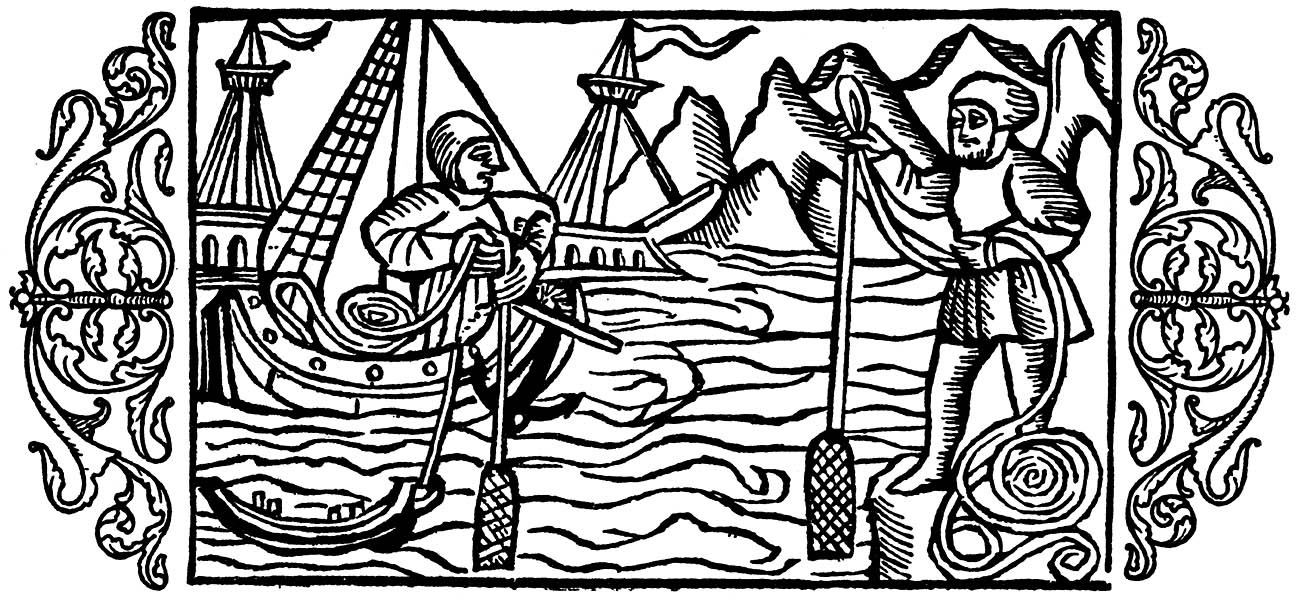In early August 2006, after spending two nights in Edinburgh, the eight of us piled into two rental cars and headed west, trying to stay on the left side of the road, through Glasgow, north to Loch Lamond, and on to Inverary Castle, the seat of Clan Campbell and home of Torquhil Campbell, the Duke of Argyll, historically an important position in Scotland. Our destination was Kilmartin Glen, a valley another 40 miles southwest so we didn’t stay long. Besides, the castle was much too recent. We were looking for remnants of life in these parts thousands of years older.
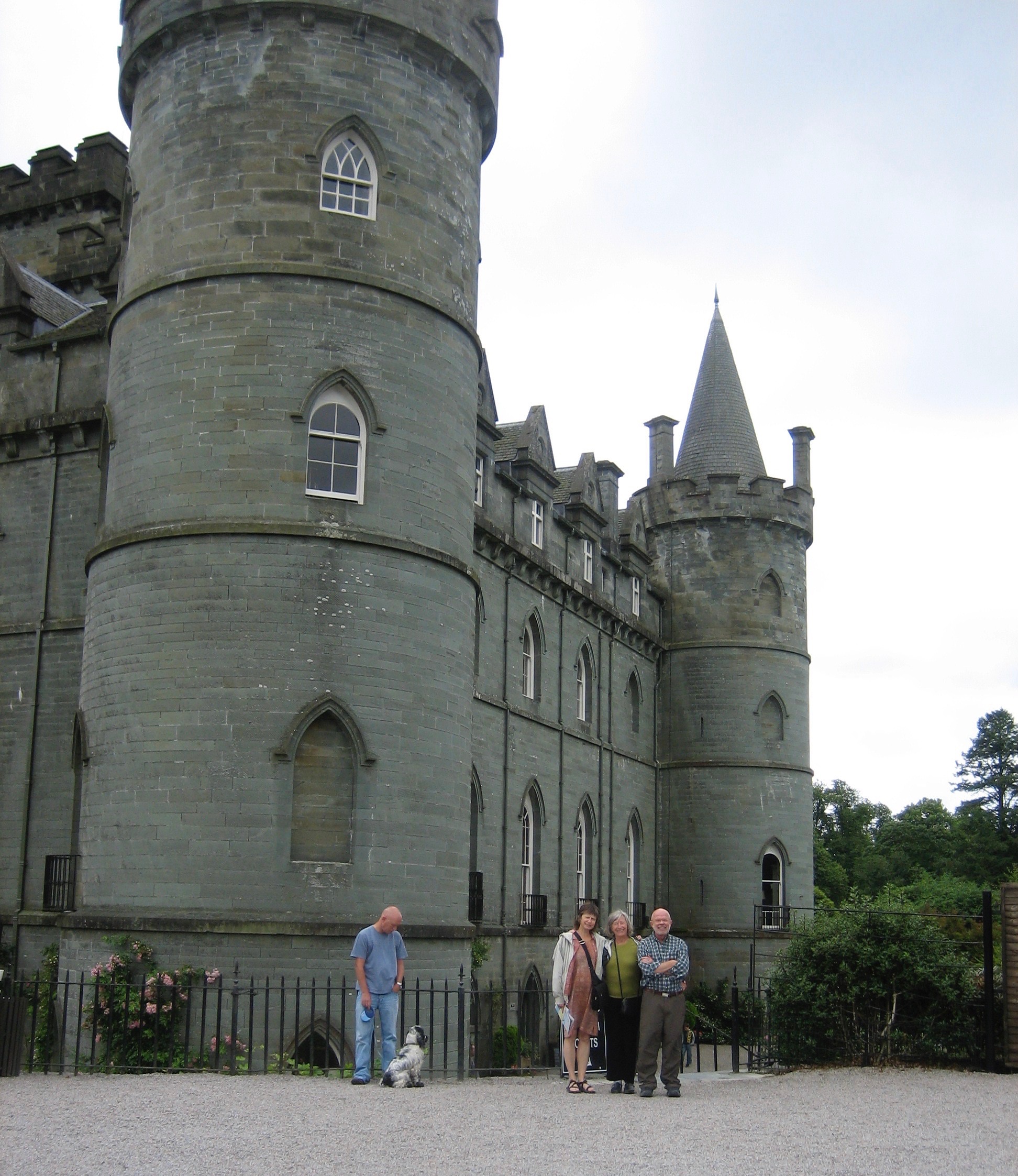
Kilmartin, set against a hillside that makes the valley, is a village of a score of buildings, the Kilmartin Hotel and Kilmartin Parish Church its most prominent. We had reservations at the hotel but as we pulled up, it didn’t look promising.

Looks can deceive. We were greeted warmly and soon in our rooms unpacking. Our room was modest but it faced the valley, miles of intensely green pasture peppered with cows, standing stones, and large cairns. The hotel has a full bar and after enjoying mid-afternoon beers our wrong-side-of-the-road driving anxiety melted away. Too much challenging car time. We wanted to walk.
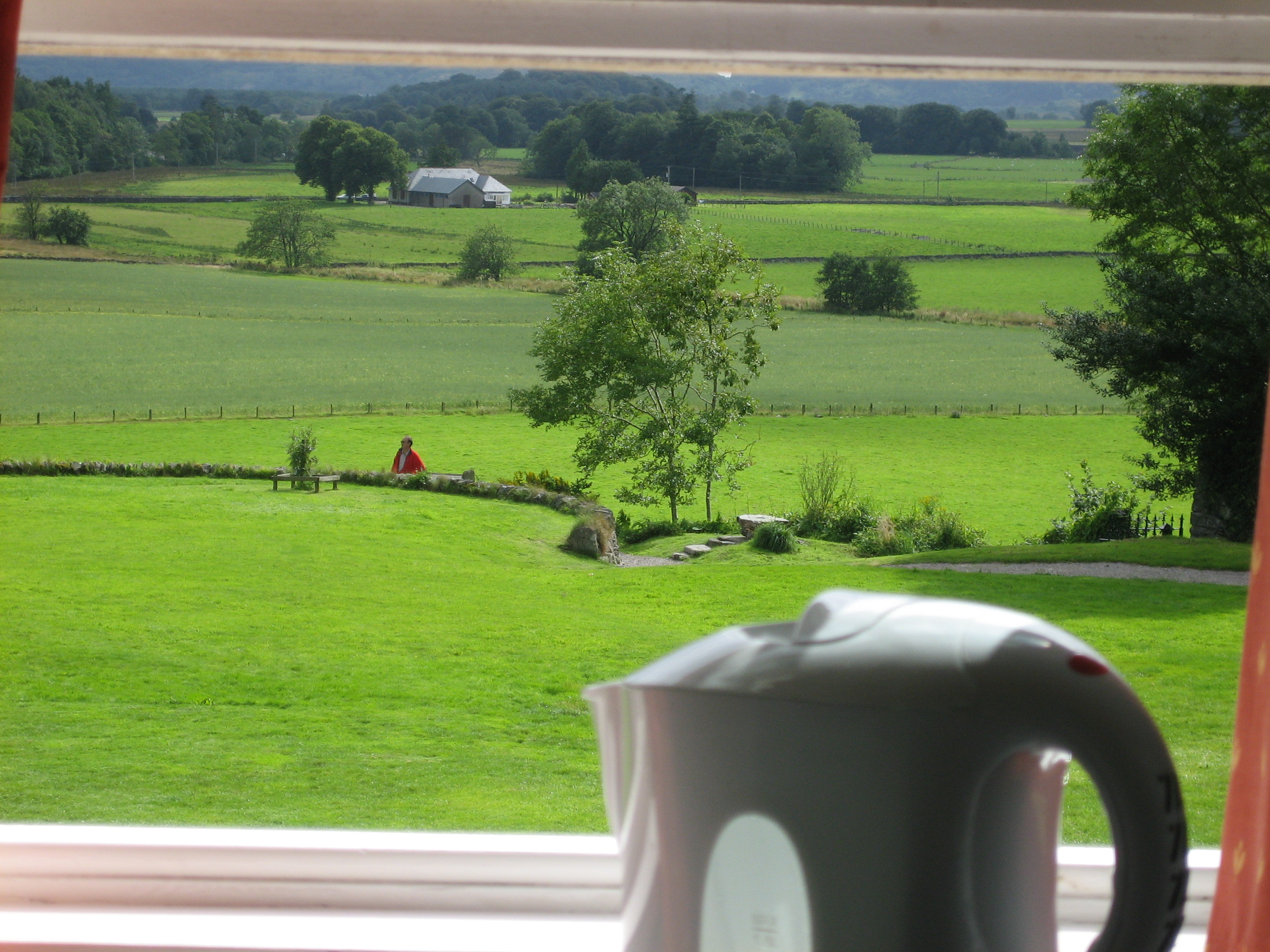
The Kilmartin Parish Church, built in 1835, lies just across the road from the hotel so we wandered there to see some new history though mostly we were thinking about dinner.
The church cemetery has many elaborate standing and recumbent grave slabs, some carrying names and dates, some with elaborate coats-of-arms, each with an implied story about an individual person who lived a few generations ago (or maybe in the Middle Ages), who was born, flourished, suffered, and then returned to the earth, as would we. If we could meet and talk with these people, we probably wouldn’t be so surprised at what they had to tell us. They lived in historic times.

It was the other grave sites in the valley, last resting places of unnamed people from millennia ago and the standing stones they raised we wanted to look at, touch, and meditate on.
Soon it was dinnertime and we were ready – though we didn’t know quite what to expect. As it turned out the food was exceptionally good and not just because we were hungry. Interestingly our waitperson was from Eastern Europe. We were surprised but she wasn’t. The European Union made migration to job opportunities much simpler than it had been. Maybe now, as I write this thirteen years later, the Brexit bomb will change that for Scotland and the rest of the UK.

Beginning 5000 years ago and for millennia, Kilmartin Glen was a sacred place, a ritual landscape, for people who lived in or visited the area. And here’s the connection: For years the eight of us had walked together in the Good Friday Pilgrimage at Chimayo, New Mexico, and after Yvonne read Scott Peck’s In Search of Stones she suggested Scotland might be a good place for us to visit together. Ann, our rock art expert, did some research and that led us to Kilmartin Valley, one of the richest Stone Age areas in Great Britain.
What made the Kilmartin Valley sacred to Neolithic and Bronze Age people? What makes a place sacred to anyone? Is it something inherent? Is it something projected? Does ritual over years make a place holy the way a velveteen rabbit handled and loved enough becomes real? Or are some places on our planet inhabited by spirits sensitives can detect? Or are structures perceived as holy because they’re built on ley lines? Or is the supposed sacred just a delusion? Does it matter?
Valley Cairns and standing stones
Glebe Cairn (1700-1500 BC) stands at the northern end of a mile and a half linear cemetery in Kilmartin Glen and because it’s close to the Kilmartin Hotel it’s the first stone site we visited. The cairn is circular, about 90’ across and about 10’ high. By the way, ancient sites in the Kilmartin Glen anticipate tourists and are especially well documented, with placards nearby describing their discovery, recovery, and history.

Heading south and climbing a stile that apparently neither cows nor sheep can manage and then crossing Kilmartin Burn, the creek that waters the valley, we came to Nether Largie North Cairn. About the same size as the Glebe Cairn, we could enter this one and found a restored tomb with a cist, a rectangular stone box, in the floor that would have held the remains of the person being honored by the cairn.
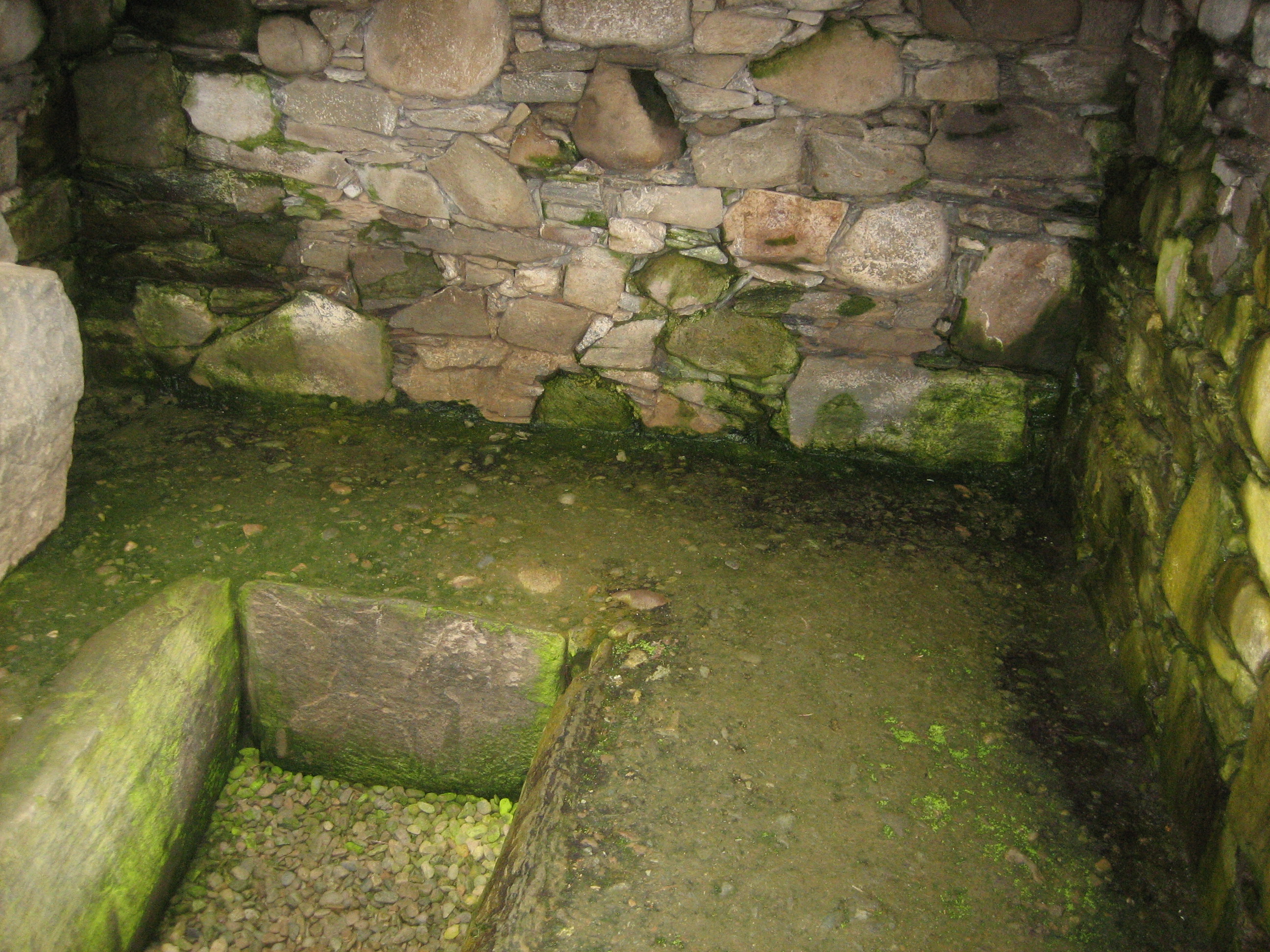
Farther south lie Nether Largie Mid Cairn and Nether Largie South Chambered Cairn, the latter south of the elementary school, a handsome stone building constructed in 1840.

Nether Largie South is a megalithic chambered tomb, probably the oldest in the linear cemetery, built before 3000 BC. Originally a circular cairn, it was enlarged over time to have a rectangular base to accommodate more graves.
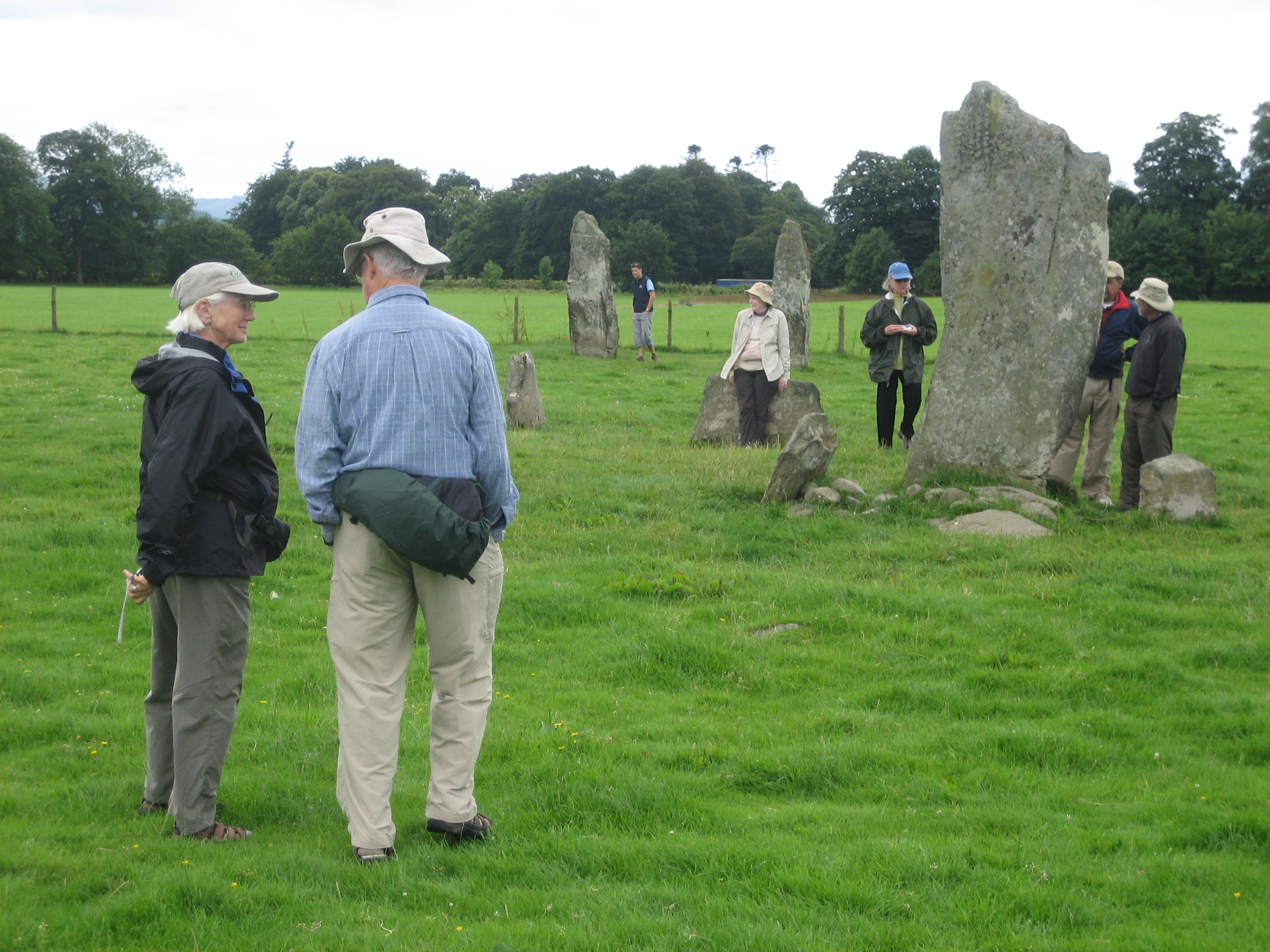
Yet farther south, standing stones appear, common in Scotland, England, and France, with thousands of sites, some elaborate and famous, like Stone Henge and others more complete, beautiful, and impressive, like the henges we’d see soon on Orkney.
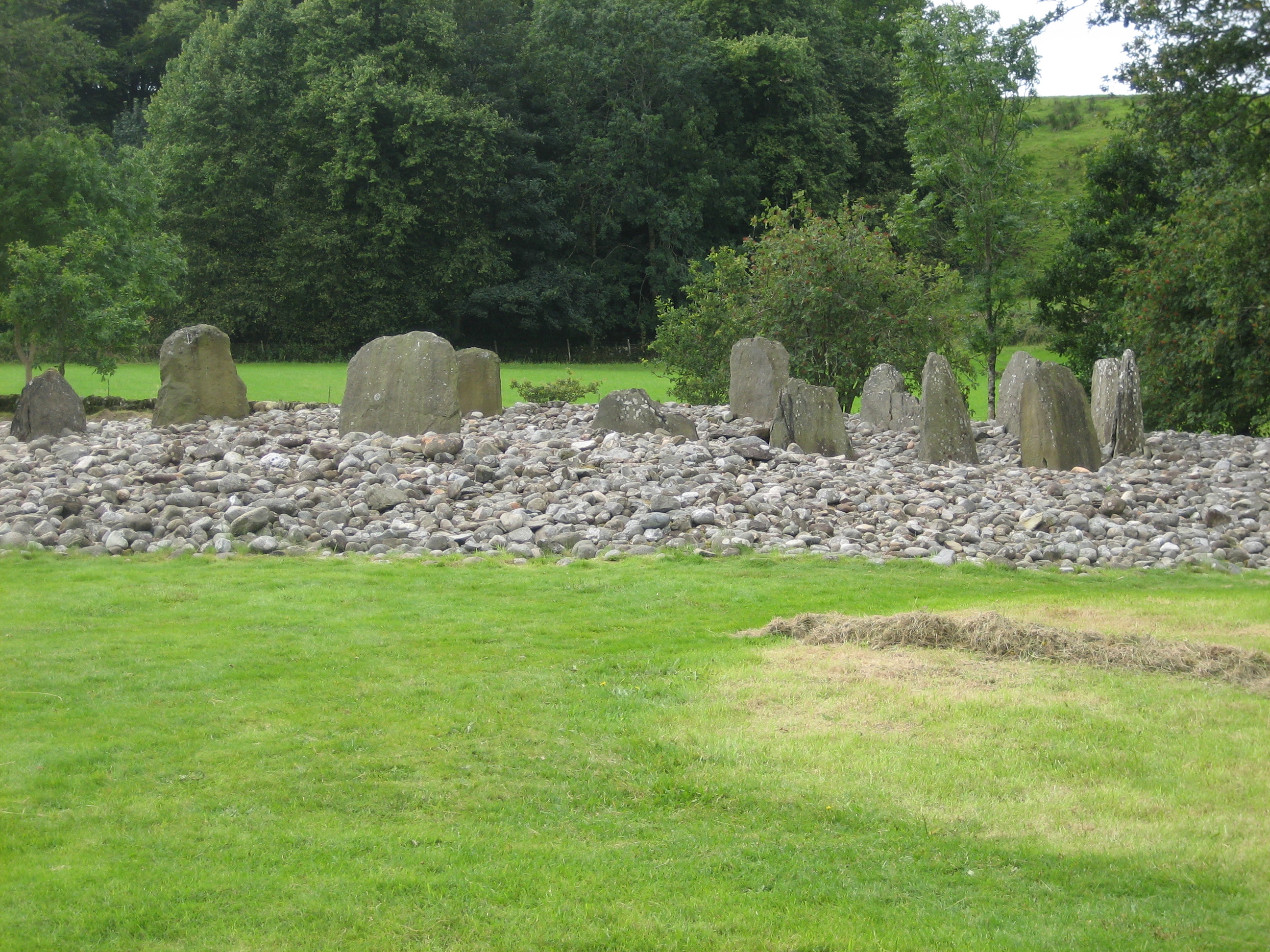
West of the scattered standing stones lies Temple Wood, two circles of modest-sized stones, in use when the valley’s cairns were being built. Initially the northern circle was built with timbers, later replaced by stones. Some of the stones are incised with carvings, such as spirals and cups, seen at other valley locations.
The bed where the stones stand is covered with rocks, perhaps indicating that the site had been decommissioned in the past. But decommissioned from what use?

We visited more cairns and standing stones, at Dunchraigaig and Ballymeanoch, yet farther south, but drove there rather than walked. After dinner and back among the standing stones in the gathering twilight some of us watched the moon rise between two standing stones, an unforgettable experience.
Achnabreck, early rock carvings
Seeing an advertising poster for Scott, an area guide, we hastened to employ his services for our second day in the Kilmartin area. He appeared at the Kilmartin Hotel, first thing in the morning (after we’d had breakfast, of course), wearing a cape, kilt, and long flowing hair. We liked him immediately.
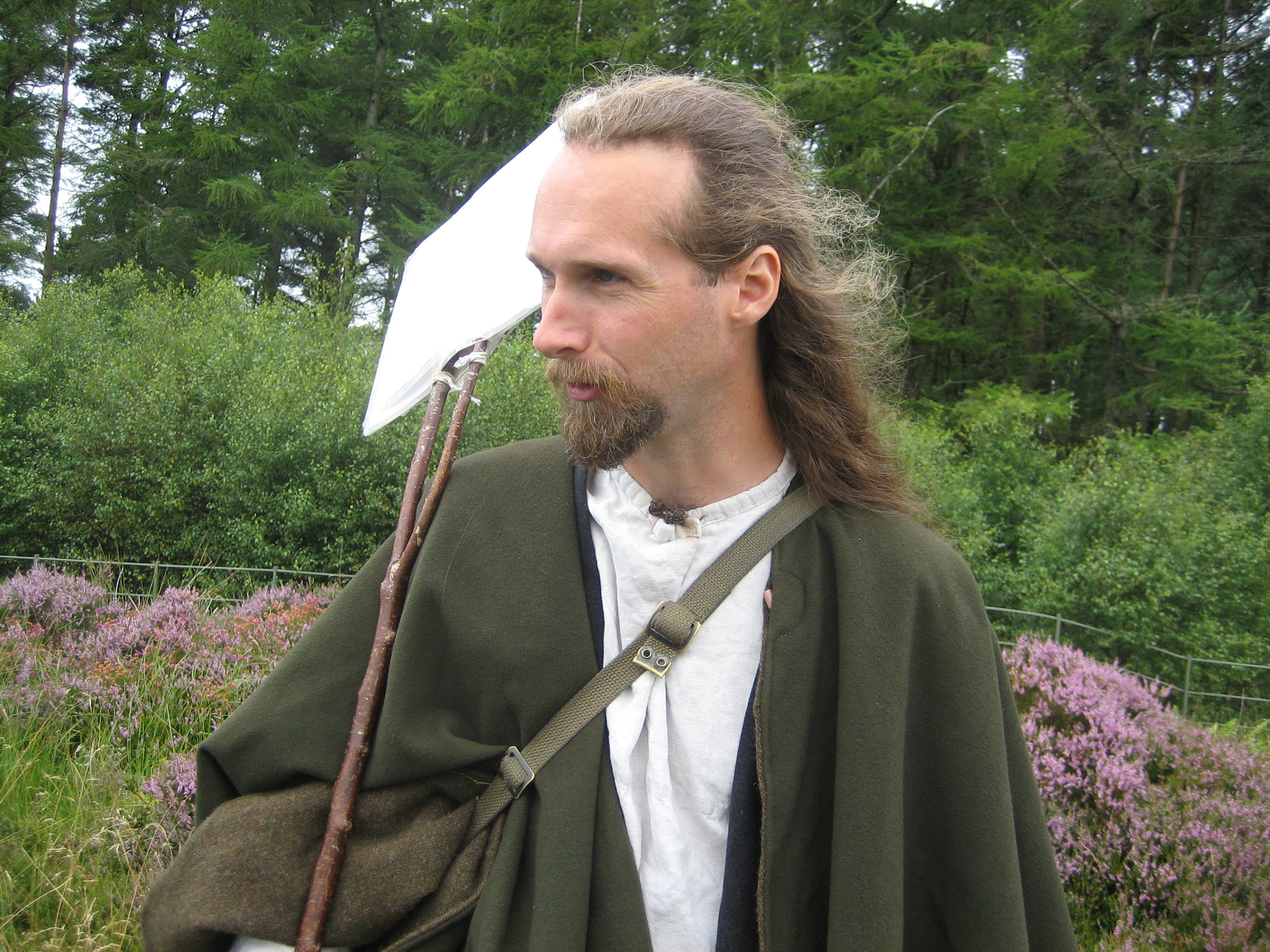
Achnabreck is a hillside of exposed rock, a rock sheet, much of it covered with carved cups and rings of various sizes, but also containing ringed stars, spirals, and parallel groves. The largest rings are over 3’ across. The rock art was created about 3000 BC, with changes made by various hands over a long period of time.
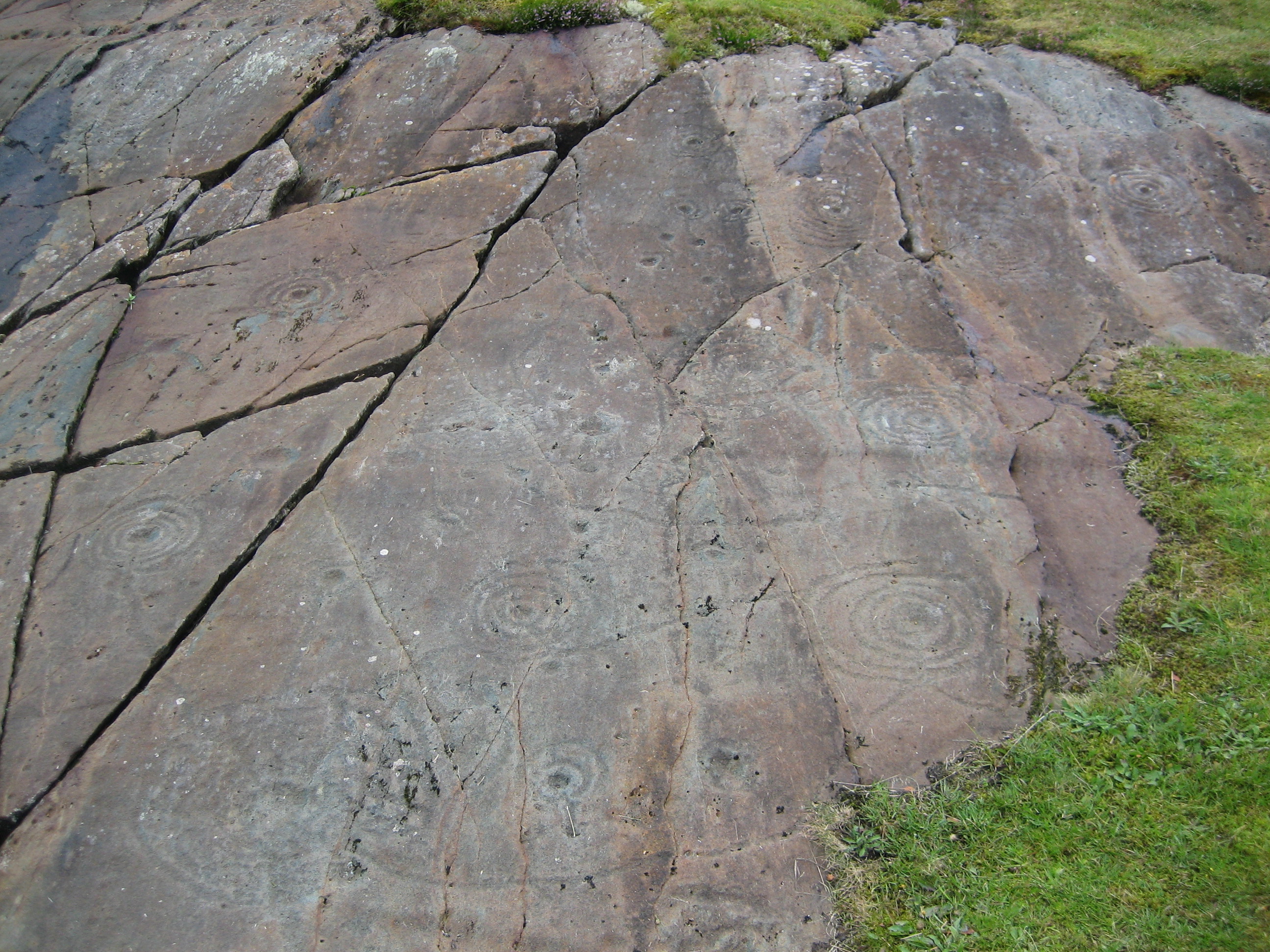
Why was this rock art created? What do all the symbols mean? Are they maps of ancient settlements in the area or of the heavens? Does the art have a ritual purpose? Led by Ann and Scott we came up with a number of theories about the meaning of the rock sheet art but none were entirely convincing. As with much prehistoric rock art, we moderns don’t really know its purpose. But we do know it was important to the people that lived here, important enough that they expended considerable effort over a long period of time to improve and perfect it.
Dunadd Hillfort
Scott next guided us to Dunadd, an Iron Age, post-Roman-occupation hill fort, at the south end of Kilmartin Glen, rising from the Moine Mhor bog. Two human footprints are carved into the rock at the site, a mystery that generates many stories. There’s also the image of a boar.
A fort on rock in a bog would seem a good place to defend and apparently it was since Dál Riata Gaelic kings ruled the area from here for 300 years, about AD 500 to AD 800. The view of Moine Mhor, the hills and water beyond, is spectacular. Visiting this fort led us to recall our recent visit to Inverary Castle, much more comfortable, but much less dramatic.
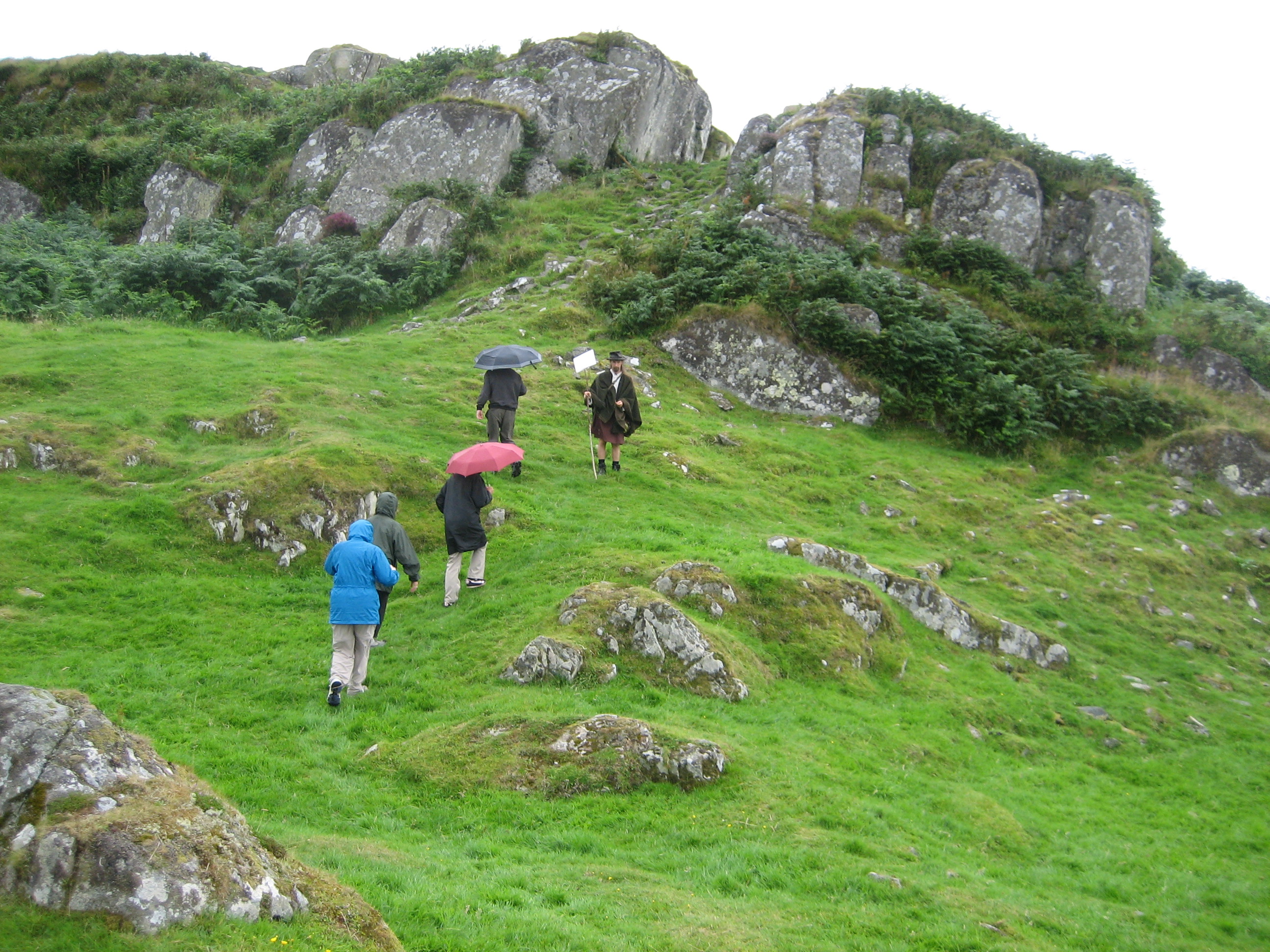
Though not much of the fort remains or any of the town that probably surrounded it, archeological excavations reveal metal working, craft work, pottery, and far-flung trade. Dunadd appears in written records as early as 683 AD.
While we were with Scott at Dunadd, the heavens opened so we quickly raised our umbrellas and closed our raincoats. Scott, a Scot, was unperturbed and barely noticed the downpour.
Crinan Canal
The Crinan Canal slices across the peninsula south of Kilmartin Valley cutting many miles off boat trips through to the Irish Sea. At Dunadd we were close so we decided to take a look.
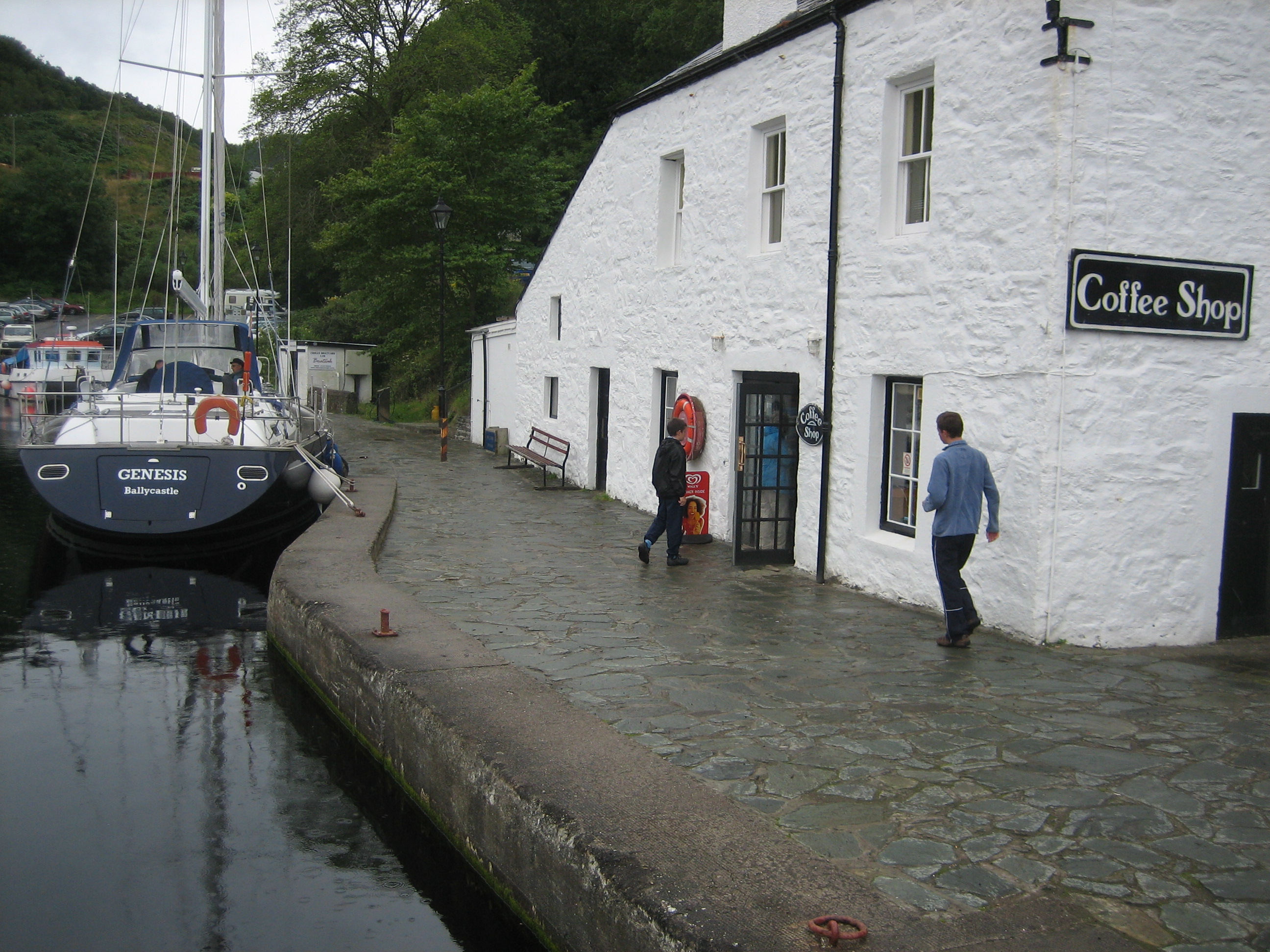
The canal, finished in 1801, is sometimes called “Britain’s most beautiful shortcut.” We drove the length of the canal to its terminus at Crinan, saw boats moored there that enjoy lots of cruising territory to the west and talked to an Irishman who had just brought his sailboat into the small harbor to escape a coming storm. Coffee and a mid-afternoon snack at the café was expensive.
The canal was built for towing barges and that’s not so important today but the towpath has become a great venue for walking, running, and biking and the canal itself for kayaking and canal boat travel. Travel and exercise has replaced transport.
Carnasserie Castle
Our last tourist foray in the Kilmartin valley was Carnasserie Castle, at its north end. After the open green pastures we had tramped through looking at cairns, standing stones, circles, and rock art, the castle seemed a dark and uninviting place. And it was raining.

Built in the 16th century, and a topnotch secure residence in its day, the castle has fallen into ruin, its roof gone, of course, though much of the masonry is intact. I wouldn’t want to live there but I could live at Inverary in a pinch.
We left the church and went back to the hotel, ignoring the Kilmartin House Museum of Ancient Culture. In retrospect I think it was a mistake to skip the museum.
Did we find the genius loci, the protecting spirit, the guardian deity of Kilmartin Glen, the reason people came here long ago and stayed for millennia to perform rituals of burial, acknowledge the change of seasons, and propitiate the gods of fertility?
I don’t know but we found something. We found a small hotel with a warm and welcoming staff and very good food. We found an entry point to a lost world that was much closer to nature than ours and that had a rich, though certainly challenging life. We found a place of peace and beauty, where black, brown, and white cows idle on green grass among standing stones and piles of rocks that are again visited and esteemed. And maybe most importantly, we walked and talked and wondered, grateful to be with each other making shared memories.
© 2019 – 2020, johnashenhurst. All rights reserved.
